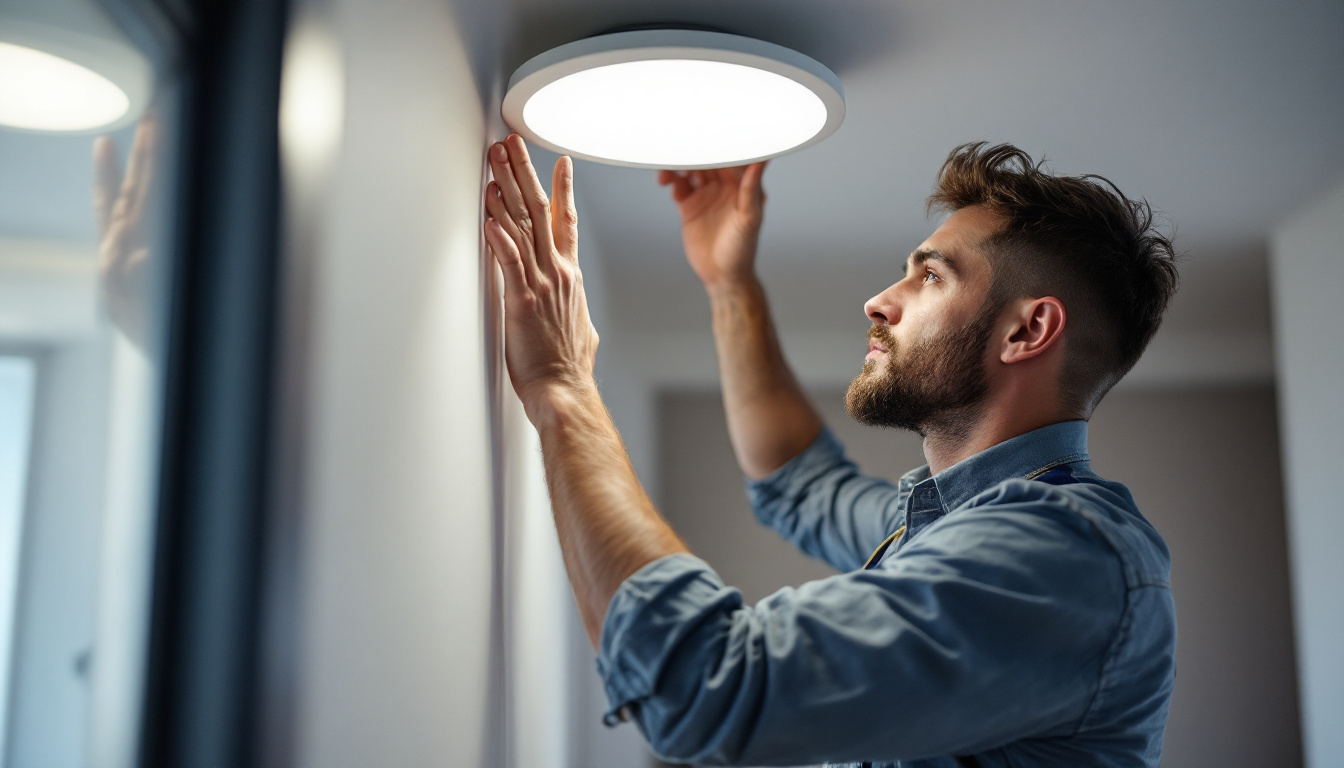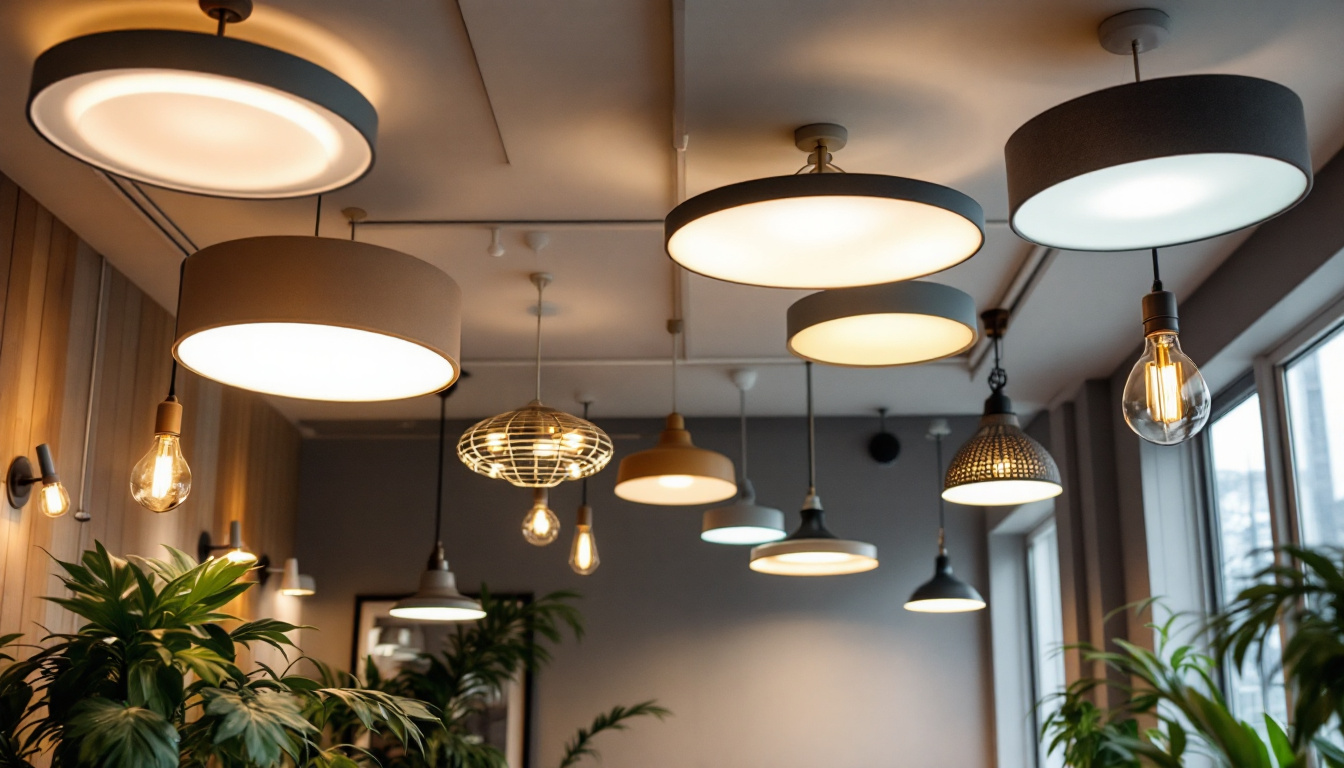
Fluorescent light bulbs are a staple in the lighting industry, widely used in commercial, industrial, and residential settings. However, selecting the right size and type can be a complex task, especially for lighting contractors who strive to meet their clients’ needs efficiently. This guide aims to highlight common mistakes made when choosing fluorescent light bulb sizes and provide valuable insights to enhance decision-making.
Fluorescent light bulbs come in various sizes, shapes, and wattages. Understanding these specifications is crucial for lighting contractors to ensure optimal performance and energy efficiency. The size of a fluorescent bulb typically refers to its length and diameter, which can vary significantly based on the application. Proper selection not only enhances the aesthetic appeal of a space but also contributes to cost savings through energy efficiency.
Fluorescent bulbs are categorized by their length, usually measured in inches. The most common sizes include:
Each size serves different purposes, and understanding the specific requirements of a project can help in selecting the most appropriate bulb. Additionally, the diameter of the bulb, often indicated by a number followed by “T” (e.g., T8, T12), is also critical in ensuring compatibility with fixtures. For instance, T8 bulbs, which are 1 inch in diameter, are more energy-efficient compared to the older T12 bulbs, which are 1.5 inches in diameter. This shift not only reduces energy consumption but also lowers heat output, making T8 bulbs a preferred choice in many modern lighting designs.
Fluorescent bulbs are not only defined by their length but also by their shape. Common configurations include linear, compact, and circular. Linear bulbs are the traditional long tubes, while compact fluorescent lamps (CFLs) are smaller and designed to fit into standard light sockets. Circular fluorescent bulbs, on the other hand, are often used in decorative fixtures.
When selecting a bulb, it’s essential to consider the shape that will best fit the fixture and the intended application. Misjudging the shape can lead to compatibility issues and ultimately affect the lighting quality. Furthermore, the choice of shape can also influence the distribution of light in a space. For example, linear bulbs provide a more direct light source, making them suitable for task lighting, whereas circular bulbs can create a softer, more diffused light, enhancing ambiance in areas such as lounges or waiting rooms. Understanding these nuances can significantly impact the overall effectiveness of a lighting design.
Even experienced lighting contractors can fall into traps when it comes to selecting fluorescent bulbs. Here are some common mistakes to avoid:
One of the most significant errors is failing to consider the compatibility of the bulb with the existing fixtures. Each fixture is designed to accommodate specific bulb sizes and shapes. Installing a bulb that does not fit properly can lead to flickering, reduced efficiency, and even damage to the fixture.
Before making a purchase, contractors should always verify the specifications of the fixture. This includes checking the recommended bulb size, wattage, and shape. Taking the time to ensure compatibility can save both time and money in the long run.
Another common mistake is neglecting the energy efficiency ratings of fluorescent bulbs. While it may be tempting to choose the cheapest option available, energy-efficient bulbs can significantly reduce electricity costs over time. Look for bulbs that are rated for high lumens per watt, as this indicates better efficiency.
Additionally, consider the lifespan of the bulb. Investing in higher-quality bulbs may have a higher upfront cost but can lead to lower replacement frequency and maintenance costs. Understanding the long-term benefits of energy efficiency can greatly impact project budgets.
The wattage of a fluorescent bulb is a critical factor that influences brightness and energy consumption. Selecting the correct wattage ensures that the lighting meets the needs of the space without wasting energy.
Traditionally, wattage has been used as a measure of brightness, but this is a misconception. Lumens are the actual measure of light output, while wattage indicates energy consumption. For contractors, understanding this difference is essential when advising clients on lighting options.
For example, a 32-watt T8 fluorescent bulb typically produces around 2,800 lumens. In contrast, a 40-watt T12 bulb produces approximately the same amount of light. This knowledge allows contractors to recommend the most efficient bulb for a given application, helping clients achieve their desired brightness while minimizing energy costs.
Different spaces have varying lighting requirements. For instance, an office may require brighter lighting than a storage area. Assessing the specific needs of each space is crucial in determining the appropriate wattage and bulb type.
Contractors should conduct a thorough evaluation of the lighting requirements, considering factors such as the size of the space, the color of the walls, and the tasks being performed. This assessment will guide the selection of the right wattage and ultimately enhance the overall lighting quality.
color temperature is another important aspect that contractors should consider when selecting fluorescent bulbs. Measured in Kelvins (K), color temperature affects the ambiance of a space and can influence productivity and mood.
Fluorescent bulbs come in a range of color temperatures, typically categorized as:
Choosing the right color temperature is essential for creating the desired environment. For example, warmer tones can promote relaxation, while cooler tones can enhance focus and alertness. Contractors should engage with clients to understand their preferences and the intended use of the space.
Different applications may require specific color temperatures to achieve optimal results. For instance, a medical facility may benefit from cooler lighting to enhance visibility during procedures, while a restaurant may prefer warmer tones to create a welcoming ambiance.
Contractors should be prepared to discuss these nuances with clients, guiding them towards the most suitable color temperature for their specific needs. This attention to detail can significantly enhance client satisfaction and project outcomes.
Once the appropriate fluorescent bulbs have been selected, installation becomes the next critical step. Proper installation ensures that the bulbs perform optimally and that safety standards are met.
Fluorescent bulbs require a ballast to regulate the electrical current. It is crucial to ensure that the ballast is compatible with the selected bulb type. Using an incompatible ballast can lead to flickering, reduced lifespan, and even bulb failure.
Contractors should familiarize themselves with the different types of ballasts, including electronic and magnetic options. Understanding the specific requirements of the bulbs being installed will help in selecting the right ballast, ensuring a successful installation.
In addition to ballast compatibility, ensuring that fixtures are installed correctly is vital for optimal performance. This includes securely mounting fixtures, ensuring proper wiring, and following manufacturer guidelines.
Contractors should also conduct a thorough inspection after installation to verify that all bulbs are functioning correctly. Addressing any issues at this stage can prevent future complications and enhance client satisfaction.
Even the best fluorescent bulbs will require maintenance and eventual replacement. Implementing effective strategies can help extend the lifespan of bulbs and maintain optimal lighting quality.
Conducting regular inspections of installed fluorescent bulbs is essential for identifying any issues early. This includes checking for flickering, dimming, or color shifts, which can indicate that a bulb is nearing the end of its lifespan.
By staying proactive, contractors can address issues before they become significant problems, ensuring that clients receive consistent lighting quality. Regular maintenance not only enhances client satisfaction but also establishes a reputation for reliability.
Establishing a replacement schedule based on the average lifespan of fluorescent bulbs can help prevent unexpected outages. Most fluorescent bulbs have a lifespan ranging from 7,000 to 15,000 hours, depending on the type and usage.
Contractors should educate clients on the importance of timely replacements to maintain consistent lighting quality. Implementing a replacement schedule can also aid in budget planning, ensuring that clients are prepared for future expenses.
Selecting the right fluorescent light bulb sizes is a critical aspect of any lighting project. By understanding the various sizes, wattages, and color temperatures available, lighting contractors can avoid common mistakes and make informed decisions that meet their clients’ needs.
From ensuring fixture compatibility to considering energy efficiency and color temperature, each decision plays a significant role in the overall success of a project. By following the guidelines outlined in this article, contractors can enhance their expertise and provide exceptional service to their clients.
Ultimately, a well-executed lighting plan not only improves the functionality of a space but also contributes to the overall satisfaction of clients. With careful consideration and attention to detail, lighting contractors can navigate the complexities of fluorescent light bulb sizes and create effective lighting solutions.
Ready to elevate your lighting projects with the right fluorescent light bulb sizes and avoid common pitfalls? At LumenWholesale, we provide lighting contractors like you with the highest quality, spec-grade lighting products at prices that can’t be beaten. Say goodbye to local distributor markups and hello to our vast selection that meets rigorous industry standards. Plus, with free shipping on bulk orders, you can stock up on premium lighting solutions without worrying about hidden fees. Don’t compromise on quality, affordability, or convenience. Discover the best value in wholesale lighting today and light up your projects with confidence.

Discover the frequent pitfalls lighting contractors encounter when installing freezer lights.

Explore the innovative strategies employed by smart lighting contractors in “Led Recessed 6.” Discover cutting-edge techniques and technologies that are revolutionizing the world of recessed lighting, enhancing efficiency, and transforming spaces with intelligent design..

Discover essential insights and expert advice on selecting and installing big temp LED fixtures for lighting contractors.

Discover the evolving world of ceiling lights and why it’s crucial for lighting contractors to stay informed.